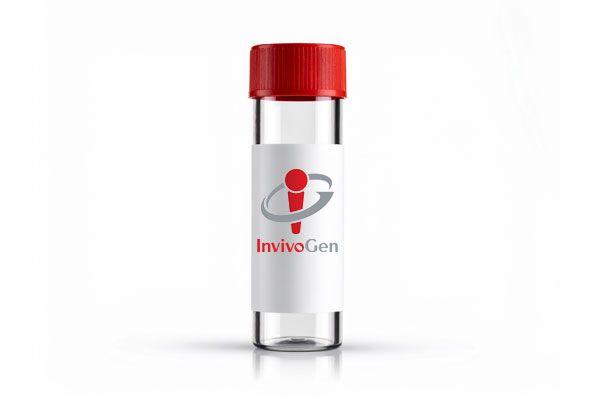
pUNO1-hTLR4-GFP
-
Cat.code:
phtlr4-gfp
- Documents
ABOUT
TLR4-GFP fusion gene was generated by fusing the green fluorescent protein (GFP) gene to the C terminus of human Toll-like receptor 4 (TLR4) gene. This fusion protein can be used to study the localization of TLR4. Transfected cells can be analyzed for GFP expression by flow cytometry and by Western-blotting using GFP antibodies. The TLR4-GFP fusion gene is cloned in the pUNO plasmid under the control of the strong and ubiquitous mammalian promoter EF1α/HTLV.
hTLR4::GFP fusion gene has been fully sequenced, its fluorescence confirmed and its function tested in HEK293 cells coexpressing MD2 and CD14 genes (pDUO-hMD2-CD14) and an NF-κB reporter plasmid (pNiFty-SEAP).
All products are for internal research use only, and not for human or veterinary use.
SPECIFICATIONS
Specifications
flow cytometry, Western-blotting
Plasmid construct has been confirmed by restriction analysis and full-length open reading frame (ORF) sequencing. Plasmid DNA was purified by ion exchange chromatography.
CONTENTS
Contents
-
Product:pUNO1-hTLR4-GFP
-
Cat code:phtlr4-gfp
-
Quantity:20 µg
2 x 1 ml blasticidin at 10 mg/ml
Shipping & Storage
- Shipping method: Room temperature
- -20°C
Storage:
Details
Toll-like receptor 4 (TLR4) is the receptor for Gram-negative lipopolysaccharide (LPS) [1]. TLR4 alone is not sufficient to confer LPS responsiveness. It forms a complex with the lipopolysaccharide-binding protein (LBP) and the coreceptors CD14 and MD2. LPS-stimulated TLR4 signals through through different adaptor proteins: MyD88, TIRAP/Mal [2], TRIF/TICAM1 and TRAM/TICAM2 [3].
The hTLR4::GFP fusion gene was generated by fusing at the C terminus of the human TLR4 gene to a GFP variant. A synthetic intron was added between both moieties to increase the activity of GFP. This hybrid protein absorbs blue light (major peak at 480 nm) and emits green light (major peak at 505 nm). The hTLR4::GFP fusion gene is under the control of the strong and ubiquitous hEF1/HTLV promoter. This composite promoter comprises the Elongation Factor-1α (EF-1α) core promoter [4] and the R segment and part of the U5 sequence (R-U5’) of the Human T-Cell Leukemia Virus (HTLV) Type 1 Long Terminal Repeat [5]. The SV40 late polyadenylation signal enables efficient cleavage and polyadenylation reactions resulting in high levels of steady-state mRNA.
1. Poltorak A. et al., 1998. Defective LPS signaling in C3H/HeJ and C57BL/10ScCr mice: mutations in Tlr4 gene. Science, 282(5396): 2085-8.
2. Horng T,. GM. Barton, and R. Medzhitov, 2001. TIRAP: an adapter molecule in the Toll signaling pathway. Nat Immunol, 2(9):835-41.
3. Fitzgerald KA. et al., 2003. LPS-TLR4 Signaling to IRF-3/7 and NF-{kappa}B Involves the Toll Adapters TRAM and TRIF. J Exp Med. 198(7):1043-1055.
4. Kim et al. (1990). Use of the human elongation factor 1 alpha promoter as a versatile and efficient expression system. Gene 2: 217-223.
5. Takebe et al. (1988). SR alpha promoter: an efficient and versatile mammalian cDNA expression system composed of the simian virus 40 early promoter and the R-U5 segment of human T-cell leukemia virus type 1 long terminal repeat. Mol. Cell Biol. 1: 466-472.
DOCUMENTS
Documents
Technical Data Sheet
Safety Data Sheet
Plasmid Map and Sequence
Certificate of analysis
Need a CoA ?